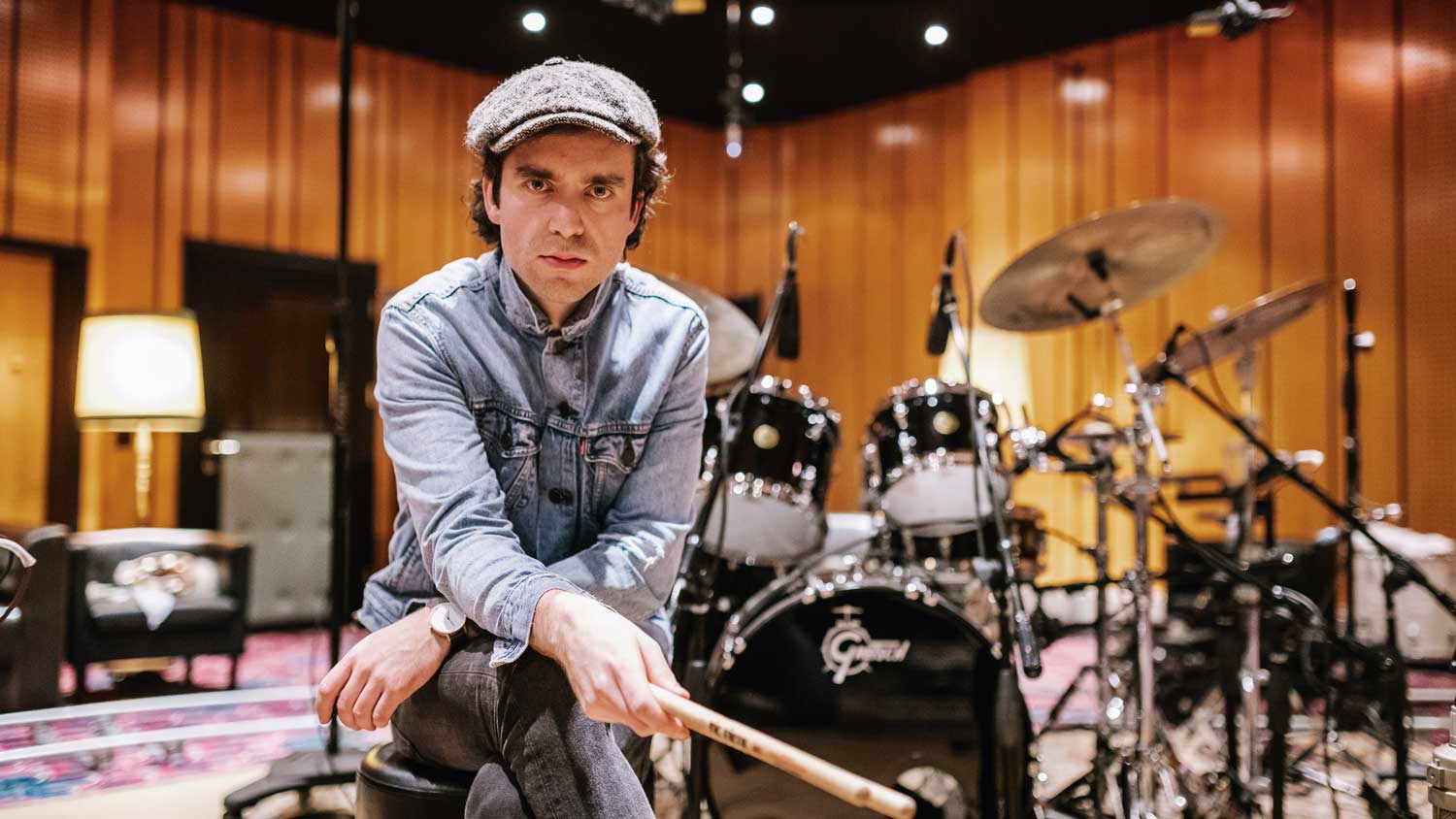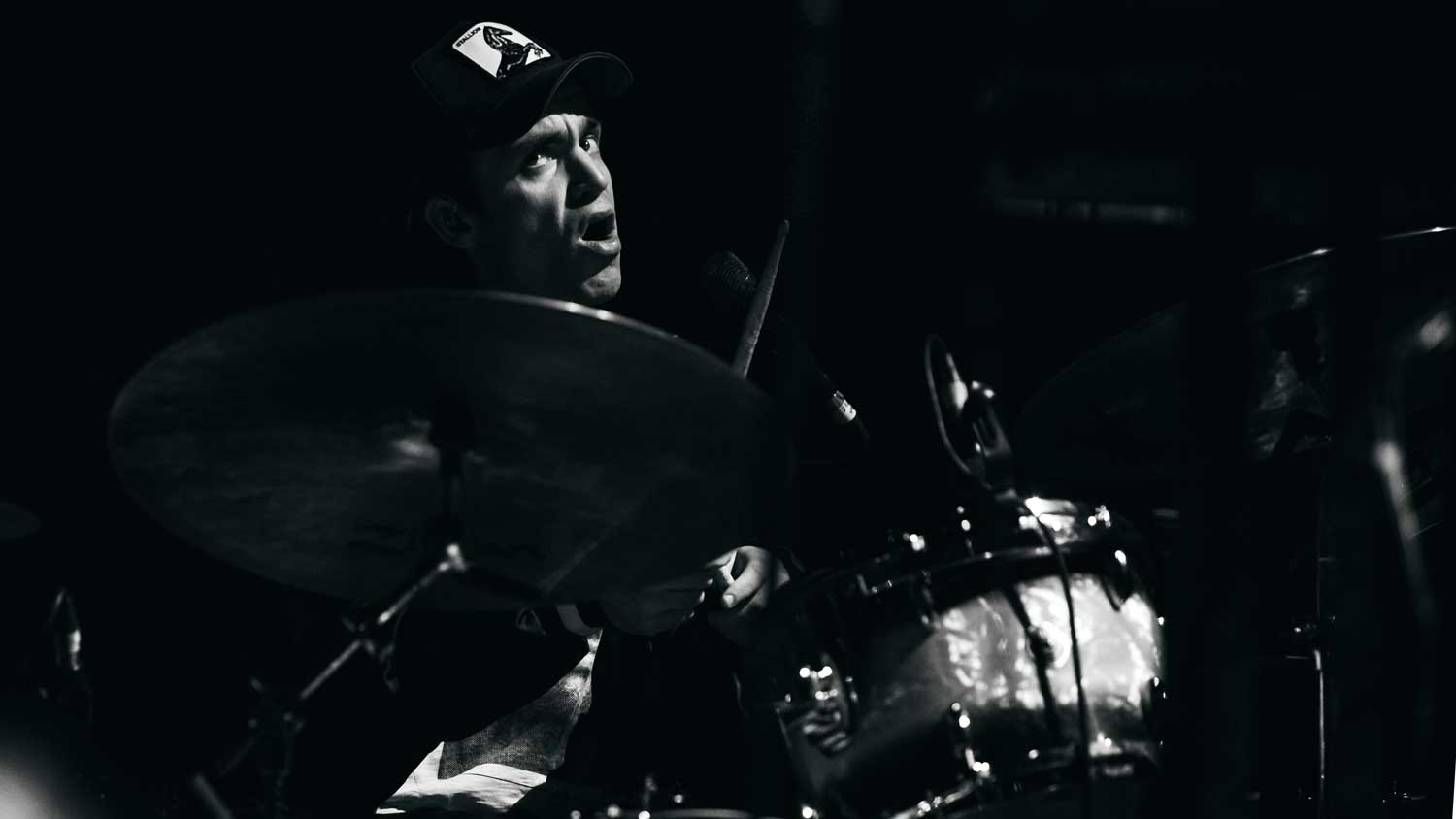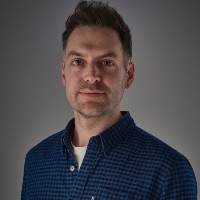Gerry Morgan: “Get stuck in and you’ll be fine. It’s never too late to learn another instrument”
The James Bay and Niall Horan drummer explains why embracing technology has been the greatest tool in realising his creative vision with pop’s biggest acts

Progression is important in any career, and Northern Irish sessioneer Gerry Morgan reveals to us that he’s been working hard to stay ahead of the curve.
The drummer got his first major career break when he joined forces with a little-known musician called James Bay around five years ago. His old-school approach to sound, style and playing for the song suited Bay’s soulful guitar pop down to the ground and their live shows were a triumph.
Once the cycle for Bay’s Grammy-nominated Chaos And The Calm album ended, Gerry’s services were quickly sought by fellow Irishman Niall Horan for his first solo outing following the 2016 hiatus of pop colossus One Direction.
As musical director, Gerry recognised that Horan’s music needed more than just a killer live band to make an impact. To give the music – and his own CV – a boost, Gerry ploughed into the world of programming, MIDI and triggers to bring sonic magic to the stage.
Despite initial reservations, he quickly learned that using technology within music wasn’t rigid or soulless. Rather, it was a tool that enabled him to be creative, organic and dynamic in the live arena, from the drum kit and beyond.
Returning to the road in 2018 for James Bay’s eclectic 2018 album Electric Light, Morgan was armed with new skills to deliver the album’s big sounds and to take Bay’s live show to the next level.
We spoke to Gerry on the phone from Munich, covering topics ranging from his long-term tenure with James Bay, his enlightening, musical foray into the world of technology and why it’s never too late to learn something new.
Get the MusicRadar Newsletter
Want all the hottest music and gear news, reviews, deals, features and more, direct to your inbox? Sign up here.
You teamed up with James Bay after his debut album had been tracked. Did you record any drums on Electric Light?
“I did, although I wasn’t around for the whole time James was tracking because I was on a different tour. James did a lot of the drums himself and then anything where a full performance was needed on drums I came in and put it down.
“A lot of the record was done by the man himself. He’s a little bit of a genius when it comes to music.”

Which tracks did you play on?
“The singles, including ‘Just For Tonight’ and ‘Us’. It was three or four tracks. We recorded in a church in London. We did some sessions in Abbey Road Studio 2 as well.
“It was funny, we were working on a thing for Rod Stewart. Rod couldn’t make the session with me, James and bass player, Tom, so we ended up tracking one of James’ tracks instead!
“We were working with Giles Martin that day, which is nice. I’ve gone on to work with him since then. We did a Faces kind of thing with him in the studio before that.
“Then I went on to do some of the soundtrack for the Elton John movie [Rocketman]. I ended up doing that with Giles and a couple of boys from Jamiroquai and Tom Jones’ band at Air Studios.”
Did James have a good idea of what he wanted from the drum parts or were you bringing your own ideas?
“It was a bit of both. I was coming up with my own parts that worked. He would go, ‘Gerry do your thing.’ We’ve been playing for quite some time now and he knows what I get up to and how I sound, so I think he trusts me on that side of things.
“Or he would have put down a scratch and I would embellish on his scratch ideas and represent what he was thinking, servicing his original ideas and performing them as a drummer would.”
Do you have go-to gear for the studio?
“I have a large collection of vintage drums. I usually take a few different options to the session, so I have different tuning options and different tuning ranges on different kits.
“Sizes and dimensions will also dictate that. I often take some of my Slingerland, Ludwig and Gretsch stuff. I’ll bring a few bags of cymbals – different sizes of hats, rides, crashes and effects cymbals.
“The kits [I end up recording] are a mixed bag of my favourite Gretsch tom, my favourite Ludwig kick and my favourite Slingerland snare or something. I play what’s going to sound good on the record.”
For artists like Niall Horan, it has to be of a stadium standard… it has to be a big-boy show
It’s important to be able to offer a range of sounds for a session?
“Yeah, I’ve got this one 60s Slingerland and every time any engineer (live or studio) hears it, they just immediately want it on their record. I’m very happy to have that kit. But sometimes that just doesn’t cut it so you need a different size, for example.
“The reason why I buy these drums is because whenever I’m travelling around the world I’ll go to vintage drum shops, collectors or dealers, and if it sounds great I’m gonna have to buy it.
“It’s part of my job to supply people with the best tonal sounds and colours possible. You need your arsenal as a musician, a recording artist or live performer.”
The reception to Electric Light has been great and the shows have been getting much bigger. Has your approach to playing with James evolved too?
“When I joined James it was just a two-piece. The first gig we did was in Glasgow to about 30 people. I was on percussion, piano and backing vocals.
“Then we’ve gone on to do arena tours and some stadium gigs. The development of sound and technology within the live production has honed my skills in terms of working with technology, with MIDI, with triggering, MIDI mapping, having my samples change throughout a verse and chorus, beat by beat if I want it that way.
“I’m just trying to recreate the sound of the record. The second record had distinctive sounds that had to be recreated and represented in the live arena. The only way I could do that for the second record was to make use of samples, Ableton, triggers and pads.
“The first [James Bay] record was much more roots-y and organic. That was cool because that was me and that still is me. That still is James and his whole sound too, but as he moved I had to move with him.
“It’s definitely given me so much more knowledge, so much more possibility and so much more to give as a drummer.”
You’ve always struck me as more of an old-school drummer. Did you embrace the technology reluctantly or was it something you knew was required for the job?
“I went in kicking. I think I was naive, uneducated and maybe a bit frightened by the new technology. Once I got a sniff of the possibilities then there was no looking back. If you can get your head around the likes of Ableton or the Roland products, you can use them in such a creative way.
“But you can also use it in an organic way. I’m not just taking samples from loop libraries or anything. I’m creating my own loops, I’m recording my own samples.
“You might hear a snare drum sample, but that’s one of my beautiful snare drums with a lot of my percussion that I’ve collected from my travels. It’s all me, but because I can’t play all those instruments at one time I layer things.
“It’s still organic, but it’s just allowing me to do so much more than is humanly possible.”

How did you go about learning to use the technology? Did you just start experimenting?
“Yes. I was working with QLab and the Roland SPD-SX and triggers. That started when I got a new job with Niall Horan from One Direction. That tour was his first outing.
“I think Niall really enjoyed the drums on the James Bay gig. He’s a big James Bay fan and it turns out he was a fan of what I brought to the table. He wanted to keep things natural and organic, which is cool, but as soon as the songs started to be serviced to me I knew that we needed to run a programmed track.
“I started sampling the sounds from the record as well as adding in my additional instrument collection at home. It was about experimenting, it was about failing, getting it right and growing once I got it right.
“When I went back into the James gig, I was doing exactly the same thing but we were using Ableton instead of QLab.
“At the moment I’m on the road with Snow Patrol, opening up the show with a new artist from Warner called JC Stewart and I’m using a lot of MIDI mapping and I’m running my tracks off Ableton.
“I’ve been going in very deep so I can control keyboard patches as well as my drum triggers. My samples are changing with verses and choruses.
“They’re setting off samples, but they’re also setting off loops, so I could be playing a 6/8 groove but I might have half the bar cut up into my kick drum pattern, and then the other half of the bar cut up to my snare pattern so that there’s simultaneously two grooves happening.
“Importantly, they have a humanistic feel because I’m setting them off. I’m trying to get more musical with my approach. It’s really interactive.
“When I went in deeper I got help off Si Francis who is a lovely programmer and bass player for the likes of Ellie Goulding and Kylie. He sat me down and got me up to speed. I’ve a lot to thank him for.”
You must have felt the pressure to get it right for a major artist like Niall Horan?
“It has to be of a stadium standard, whether it’s in a small room or a big room. The production has to be like a big-boy show. It has to be 100 percent professional.
“That involved making live arrangements, making the actual show sound good, creating a show, rearranging for medleys for TV shows and awards shows, working with different artists for duets, working their songs into Niall’s songs.
“There were a lot of changes happening and a lot of my creativity within the show, which was good. It was a great challenge and I really enjoyed it.”
This music is all about making statements. And I like to make statements with tones.
You’re currently musical director for JC Stewart. Why do you think drummers lend themselves to that role?
“Because they don’t take guitar solos! No, maybe it’s because the drummer’s always the driver. You can push and pull the feel of a song, you know where a song should sit live because tempo and feel is very much a part of your upbringing and understanding. It’s the backbone of what you do.
“I think as musical director you need to know where songs sit live. If you’re always thinking about the big sounds from behind your kit, you can do that in pre-production with tracks and arrangements and sonics.
“I think anyone can do it, maybe drummers just want to take on that extra responsibility. I also want to show that I understand harmony and melody.
“I studied music at university, so I studied my jazz harmony and arrangements; I like to use those skills.”
Do you enjoy the added pressure of being MD?
“I think the pressure has gone. There used to be pressure, but I enjoy the responsibility.
“I get a kick out of that and visualising something in my studio with all the tracks, and then arranging it and programming the parts and the instruments and I enjoy translating that to the live arena.”
How early does that process start?
“It depends on how much material we’ve got to work with. It depends if you want to service the songs as they are on the record, or whether you can go in and really recreate something live, structurally making it different, making cool intros, cool outro sections.
“Every gig is different. I could be there working for a week, chilling out and working through the day with gigs at night, or I could be doing them on the road.
“If there’s a new song that comes in, you can be working on your mobile studio on the road. I’ve recorded additional guitar parts in a trailer backstage before the set because they’re just needed for the live sound, it needs a little more drive.
“You record them, line in, make them sound good, bounce them down and stick them on the track. You just need to be ready to go.”

Do you get a kick out of that off-the-cuff stuff?
“Yeah. It’s organic. That’s how I like playing music – getting in the room and jamming with someone is all about spontaneity. Just because you’re working on a predetermined sound that’s locked in on a playback system doesn’t mean it needs to be rigid.
“You can have different sections if you’re using Ableton; you can go round choruses another time if you want. It’s very interactive. Technology isn’t scary. I’ve learned that it can be organic as well.”
You have a new Gretsch kit for this tour
“I went for the USA Custom. It’s so versatile. On the tour I’m playing one up, one down. We’re playing arenas on this tour.
“It’s finger-tight tuning and just slightly above that with the key. I can just play one or two notes on a fill and leave space and let the drums sing out in the larger rooms. It just sounds so fat. I’m really happy with it.”
JC Stewart’s music sounds huge with plenty of space between the notes...
“Everything counts with JC Stewart. His production is impactful, bombastic. It sounds like it’s made for a large room.
“You know, I really enjoyed planning this set for the large arenas, because it kind of sounds like it’s where it belongs. This music is all about making statements. And I like to make statements with tones.
“It’s so enjoyable to play a really sparse fill and then just let the room do the work. Creating space with your playing, letting the decay happen, letting reverb ring out and letting the drums just sing in this space.
“You can say so much more with one hit on a crackingly-tuned drum. Whenever people test a drum kit out they don’t sit down and play a 32nd-note chop, they hit it once and go, ‘That’s sick.’”
In your earlier years as a musician you immersed yourself in music of a myriad genres, playing every gig from orchestra, to jazz band and theatre. Do you feel that that upbringing gave you the versatility to be able to do what you do now?
“I really do believe that my upbringing did help because I was trying to do as much as possible in a wide variety of genres, and playing different instruments.
“I have to say that I’m very glad that I’ve left my violin playing behind though. I think it would have been very unlikely that I would have gotten employed in any musical situation!
“But it was great for learning how to pick four strings. I love strings, I just couldn’t play them very well. But my theory and my knowledge of how the instrument works is all there.
“Also, can I just make it clear that if you’re reading this and you’re 17 or 18 years old, that really doesn’t mean that you’ve lost out. Just get stuck in now and you’ll be fine. You know, it’s never too late to learn another instrument.”
Gerry’s gear
Drums
Gretsch USA Custom in Espresso Burst finish – 22"x14" bass drum, 13"x9" rack tom, 16"x14" and 18"x16" floor toms (latter not pictured), 14"x6 " chrome over brass snare
Cymbals
Zildjian – 14" K Light hats and a set of 50s 14" Constantinople hats, 20" Constantinople ride (used as a crash, sizzled), 22" Kerope main
ride, 20" Constantinople Bounce ride
(used as a crash)
Plus
Remo heads: coated Emperors on toms, Powerstroke 3 on bass drum and Controlled Sound Coated Black Dot on snare. Vic Firth SD10 Swinger sticks. DW 6000 flat-based hardware (Gerry also uses DW 9000 series). Ableton software. Roland SPD-SX and triggers. LP percussion. Porter & Davies BC2
I'm MusicRadar's eCommerce Editor. In addition to testing the latest music gear, with a particular focus on electronic drums, it's my job to manage the 300+ buyer's guides on MusicRadar and help musicians find the right gear for them at the best prices. I dabble with guitar, but my main instrument is the drums, which I have been playing for 24 years. I've been a part of the music gear industry for 20 years, including 7 years as Editor of the UK's best-selling drum magazine Rhythm, and 5 years as a freelance music writer, during which time I worked with the world's biggest instrument brands including Roland, Boss, Laney and Natal.
“I’m sorry I ruined your song!”: Mike Portnoy hears Taylor Swift's Shake It Off for the first time and plays along... with surprising results
“Nile's riff on Get Lucky is a classic example of a funk riff, where the second of each 16th-note duplet is slightly delayed”: Locking down the theory of groove










